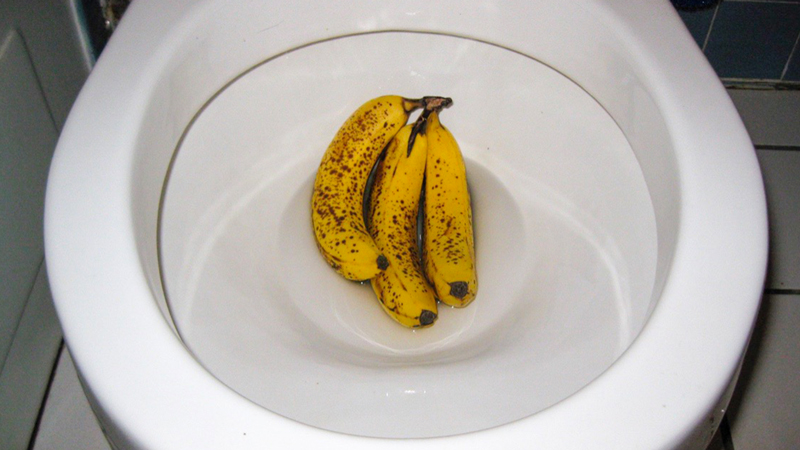Is it Practical to Dispose of Food Down the Toilet?
Is it Practical to Dispose of Food Down the Toilet?
Blog Article
How do you feel on the subject of Flushing Food Down the Toilet??

Introduction
Lots of people are often confronted with the predicament of what to do with food waste, specifically when it concerns leftovers or scraps. One usual inquiry that arises is whether it's okay to flush food down the bathroom. In this article, we'll explore the reasons why people may take into consideration flushing food, the effects of doing so, and alternate methods for appropriate disposal.
Reasons that people may take into consideration purging food
Absence of understanding
Some individuals may not recognize the prospective injury brought on by purging food down the commode. They might incorrectly believe that it's a harmless practice.
Benefit
Flushing food down the toilet might look like a quick and easy solution to throwing away unwanted scraps, especially when there's no neighboring garbage can offered.
Laziness
In many cases, individuals may just select to flush food out of sheer laziness, without considering the consequences of their activities.
Effects of flushing food down the commode
Environmental effect
Food waste that winds up in rivers can add to pollution and harm aquatic ecosystems. Furthermore, the water utilized to purge food can stress water sources.
Plumbing issues
Flushing food can lead to clogged pipelines and drains, triggering costly pipes repair services and inconveniences.
Kinds of food that ought to not be purged
Fibrous foods
Foods with fibrous appearances such as celery or corn husks can obtain tangled in pipes and trigger clogs.
Starchy foods
Starchy foods like pasta and rice can absorb water and swell, leading to obstructions in pipelines.
Oils and fats
Greasy foods like bacon or cooking oils need to never be flushed down the commode as they can solidify and trigger clogs.
Appropriate disposal approaches for food waste
Using a waste disposal unit
For homes outfitted with waste disposal unit, food scraps can be ground up and purged with the plumbing system. Nonetheless, not all foods are suitable for disposal in this manner.
Recycling
Specific food packaging materials can be reused, decreasing waste and lessening ecological effect.
Composting
Composting is an environmentally friendly method to dispose of food waste. Organic products can be composted and utilized to enrich dirt for gardening.
The importance of proper waste administration
Decreasing ecological damage
Correct waste administration practices, such as composting and recycling, assistance minimize contamination and protect natural resources for future generations.
Shielding pipes systems
By preventing the method of flushing food down the commode, property owners can prevent expensive plumbing repair work and keep the honesty of their plumbing systems.
Final thought
To conclude, while it may be tempting to purge food down the bathroom for convenience, it is necessary to comprehend the potential effects of this action. By embracing correct waste monitoring techniques and dealing with food waste properly, individuals can contribute to much healthier plumbing systems and a cleaner atmosphere for all.
FLUSH FOOD DOWN THE TOILET?
FLUSHING FOOD CAN CAUSE BLOCKED DRAINS IN YOUR HOME
All of the plumbing fixtures in your home are connected to the same sewer pipe outside of your home. This outdoor sewer pipe is responsible for transporting all the wastewater from your home to the Council sewer mains. Even small pieces of food that go down the kitchen sink can cause problems for your sewer. It should therefore be obvious that flushing larger bits of food, such as meat, risks a clog in either the toilet itself or the sewer pipes. Flushing greasy food is even more problematic because oil coagulates when it cools, coating the interior lining of your pipes.
THE TOILET IS NOT A BIN
Food isn’t the only thing that people shouldn’t be flushing down the toilet. People use the toilet to dispose of all kinds of things such as tampons, makeup wipes, dental floss, kitty litter and even underwear. Water goes to great lengths to educate residents about the high costs and stress placed on wastewater treatment systems simply from people flushing the wrong stuff down the toilet. It costs taxpayers millions of dollars each year, and homeowners thousands in blocked drain repairs.
FLUSHING FOOD IS A WASTE OF WATER
Flushing food is a waste of our most precious resource - water. In June this year Level 1 water restrictions were introduced to protect water supply from drought conditions. Much of New South Wales continues to be affected by prolonged drought with recent figures revealing up to 97 per cent of the state remains in drought. Depending on whether you have a single or dual flush toilet, every single flush uses between five and 11 litres of water. In the current climate this is a huge amount of water to be wasting on flushing food that should be placed in the bin (or better yet, the compost).
https://www.jabplumbingsolutions.com.au/blog/can-you-flush-food-down-the-toilet

I came across that content about Think Twice Before Flushing Food Down Your Toilet while surfing the search engines. Sharing is nice. Who knows, you will be doing someone a favor. We thank you for your readership.
Free Estimates Report this page